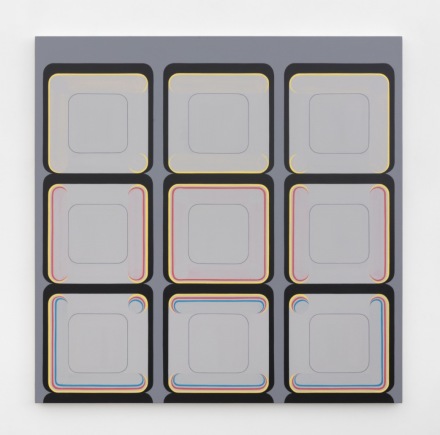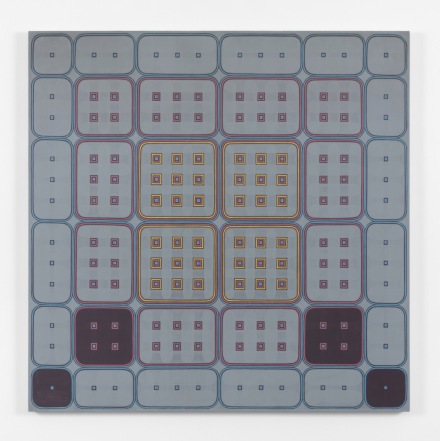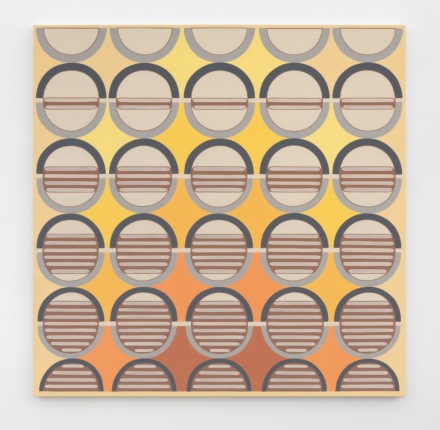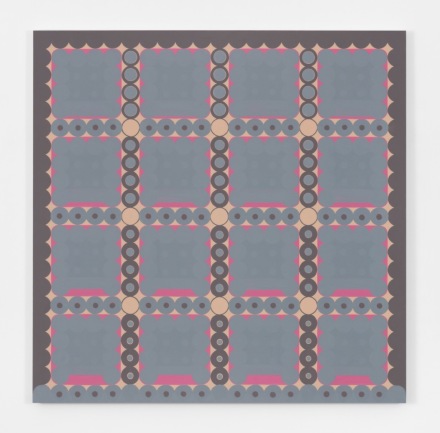
Dan Walsh, Channel (2020), via Paula Cooper
Celebrated for his work across a range of media including sculpture, bookmaking, drawing and installation, artist Dan Walsh has traced a particular trajectory in painting since the 1990s, working with a focused vocabulary of unit-based forms that include lines, circles, grids and rectangles to layer brushstrokes according to defined sets of rules yielding complex compositions. For his most recent show, on view now at Paula Cooper Gallery, a selection of more recent pieces are on view, culled from a period between 2014 and 2020, and highlighting the artist’s prolific and expansive output in the medium of painting.

Dan Walsh, Complete (2015), via Paula Cooper
Among the works on view are two forty-inch square paintings from 2018 titled Site and Plot. Though schematically very similar, the paintings generate distinct perceptual effects through Walsh’s acute modulations of color and discrete compositional shifts. Forms alternately advance or recede to create a grounded, serene visual field in one and vibrant choreography in the other. As in his 2014 painting Exchange, the lozenge mark is used consistently across the canvas—stretched, stacked, layered, and turned within a gridded matrix. Other later works in the show demonstrate a subtle expansion in Walsh’s keen manipulation of his formal lexicon. Arcs and lines overlap with chromatic brilliance in his 2020 painting Eclipse, evoking references to cellular biology or electric modules. Yet, as in his other works, Walsh’s brushstrokes retain a hand-drawn quality that activates his images with an implicit humanism.

Dan Walsh, Eclipse (2020), via Paula Cooper
Sensations of repetition are presented here as a sort of meditative act, and repeat that same sense of repose for the viewer. Walsh has been working explicitly with notions of Tibetan mandalas, and the ways in which these densely structured visual metaphors ultimately can serve both as a space for the clearing of cognitive action, and equally as a map towards transcendence. “With Tibetan mandalas, you are trying to keep your mind in the present while looking at something. There is a quality of vibration and opticality,” Walsh has said of the works. “Le Corbusier called a house a machine for living. I think of the paintings as a machine for looking, and for seeing.”
The show closes February 13th.

Dan Walsh, Benefit (2015), via Paula Cooper
– J. Shrine
Read more:
Dan Walsh at Paula Cooper [Exhibition Site]



